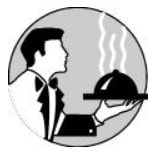|
For all the folksinger groups that exploded on the music scene in the 1960s, the granddaddy of them all was The Weavers, which was massively successful the decade before, culminating in a famous concert at Carnegie Hall. Pete Seeger was the best-known and the only one to have a solo career later (and renowned at that), but the others were integral and kept working, as well -- Fred Hellerman on guitar, Ronnie Gilbert (who many women in folk music later credited with showing them it was okay to throw back their heads and belt) and bass Lee Hays. The problem for the group came as a result of its era, coming during the period of Joseph McCarthy and the HUAC hearings in Congress, as well as Blacklist. Being on the vanguard of protest music and labor union rights, the Weavers got hit hard and ultimately were Blacklisted. They broke up and went off to their own careers. Famous as Seeger was, he couldn't get on national television (though had a local show in New York) until the Smothers Brothers invited him on in 1967. And even there, he was surrounded by controversy, as his protest song, "Waist Deep in the Big Muddy," was cut by CBS censor. A few months later, though, in February 25, 1968, the network relented and broadcast the song. Happily, The Weavers reunited briefly in 1980 and a joyous documentary was released the next year about it, Wasn't That a Time, an utterly uplifting tribute to survival. I found some clips from that and will post them in the coming days, but for now I thought it would be even better to show this video which presents the The Weavers in their prime. It's actually five videos, edited together. Back in 1951, the group was popular enough to film a series of movie featurettes. And this is all of them. It's pretty stilted, as far as filming goes -- I've love the hand-slapping during "Tzena, Tzena, Tzena" -- but the musicianship is a treat. How early is this? During this "Tzena" number, they refer to the "new country of Israel." Odd too is that, stilted as the whole group is on film (or perhaps "formal" might be the better description), they're comparatively lively in relation to Lee Hays who borders on wooden, looking almost as if he'd rather be anywhere but there, perhaps back at the office working on accounts. I don't mention this as a slight, but for a bizarre contrast with him. When you see those upcoming clips from the 1981 documentary, not only is Hays credited with writing the lively and thoroughly entertaining narrative of the film, but he's a total hoot, really the sardonic comic center of the group as he serves as basically the concert's very witty and informative emcee. (I should note that along with Seeger, Hayes was the prolific song-writer of group, most famously co-writing, "If I Had a Hammer" and many others.) I should not, too, in advance, that the documentary is far more than a recording of the reunion concert but that's only the culmination, as the film begins at a family picnic a year earlier with the old friends get together and perform a bit, which becomes the germ of an idea, that then builds through the rehearsals, the story of their lives, and finally the triumphant concert back in Carnegie Hall. But that's 30 years ahead. For now, here are The Weavers when they topped the music world.
0 Comments
Leave a Reply. |
AuthorRobert J. Elisberg is a political commentator, screenwriter, novelist, tech writer and also some other things that I just tend to keep forgetting. Feedspot Badge of Honor
Categories
All
|
|
© Copyright Robert J. Elisberg 2024
|






 RSS Feed
RSS Feed